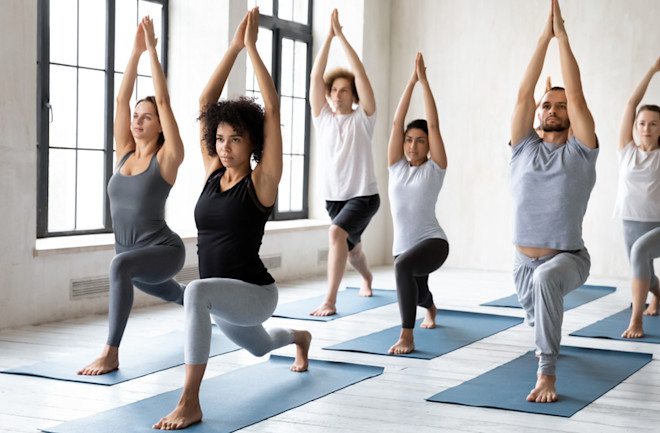
In a city as fast-paced and high-performing as Singapore, mental health challenges often go unnoticed until they begin affecting daily life — anxiety, burnout, sleep disruptions, and even emotional detachment are becoming increasingly common. While therapy and medication remain essential options, many individuals are now exploring complementary approaches to emotional wellbeing. Among the most powerful of these is bikram yoga.
More than just a physical workout, Bikram Yoga offers a full-spectrum experience that supports mental clarity, emotional regulation, and deep inner calm. Through its structured practice, heated environment, and meditative flow, it has emerged as a therapeutic tool for improving mental wellness in a way that feels both natural and empowering.
Mental Health in Singapore: A Rising Concern
According to national surveys, mental health issues are affecting more Singaporeans than ever before — especially among working adults and students. Factors contributing to this include:
- Long work hours and performance pressure
- Financial stress and cost of living
- Academic competitiveness
- Constant digital overstimulation
- Lack of work-life balance
These elements don’t just cause fatigue — they accumulate silently, impacting mental wellbeing and emotional resilience. As a result, more people are turning to wellness practices like Bikram Yoga that help them reset mentally while staying physically active.
How Bikram Yoga Supports Mental Wellness
Bikram Yoga isn’t designed specifically as a mental health therapy, but the benefits it offers naturally extend into the psychological and emotional spheres.
1. Consistency and Routine Create Mental Anchors
The 26 fixed postures and two breathing exercises practised in every class offer a dependable structure. This repetition is soothing to the nervous system and ideal for individuals struggling with mental clutter or anxiety. Knowing what comes next in class reduces decision fatigue and fosters a sense of internal rhythm and order.
2. Heat and Sweat Help Release Emotional Tension
In Singapore’s tropical climate, we’re used to warmth — but the controlled heat of Bikram Yoga creates a cocoon-like effect that encourages full-body release. As your body sweats, stretches, and holds poses under intensity, emotional blockages often loosen.
Practitioners commonly report:
- Feeling “lighter” emotionally after class
- Sudden waves of clarity during or after practice
- Crying or emotional release without specific triggers
This is the body’s way of processing unexpressed feelings through physical movement.
3. Breathwork Calms the Nervous System
Bikram Yoga requires you to breathe mindfully through discomfort — particularly in the heat. This practice of nasal breathing and stillness under stress trains your parasympathetic nervous system, helping you:
- Reduce anxiety
- Sleep better
- Develop better stress response in real-life scenarios
Controlled breathing has been scientifically shown to lower cortisol levels and improve vagal tone — both key to mental stability.
4. Mindfulness and Present-Moment Awareness
Each posture demands complete presence. Distractions — mental or emotional — naturally fall away as you focus on balance, alignment, and breath. This meditative quality:
- Trains your attention span
- Increases self-awareness
- Offers a temporary mental “escape” from daily worries
In a hyperconnected society like Singapore, having 90 minutes of digital-free, internally-focused time is a rare and valuable experience.
5. Emotional Resilience Through Physical Challenge
The intensity of Bikram Yoga builds more than muscles — it builds mental grit. Holding poses in discomfort teaches you that you can stay calm under pressure, adapt, and persevere. These lessons often translate to:
- Improved workplace confidence
- Better communication in relationships
- More balanced responses to stressors
It’s no coincidence that many high-performing professionals use Bikram Yoga as part of their weekly routine to maintain clarity and resilience.
Real Stories from Singapore Practitioners
We spoke with several locals who found profound emotional benefits through regular practice.
Clara, 31, Marketing Executive:
“I was struggling with chronic anxiety for years. Bikram Yoga didn’t ‘cure’ it, but it gave me tools — breath, grounding, awareness. I’m much more stable emotionally now.”
Rahul, 43, Entrepreneur:
“Bikram is like therapy on a mat. I walk in stressed, overloaded, and leave with a calm I can’t find elsewhere.”
Mei Ying, 28, Grad Student:
“After tough weeks in school, I cry in class sometimes — not because I’m sad, but because I’m finally letting go of tension I didn’t even realise I was carrying.”
These aren’t rare exceptions — they’re part of a growing trend in Singapore where fitness and mental health are becoming intertwined.
Complementing Therapy or Self-Care Practices
For those already working with a mental health professional, Bikram Yoga can serve as an effective complement. It adds physical movement, emotional release, and self-regulation techniques that align well with therapy goals. Some therapists even recommend yoga or breath-based modalities as adjunct tools for clients struggling with anxiety or burnout.
You can explore Bikram Yoga in a supportive environment at Yoga Edition, where instructors are mindful, experienced, and trained to guide practitioners through both the physical and emotional aspects of the practice.
Frequently Asked Questions (FAQs)
Q1. Can Bikram Yoga replace therapy or medication?
No. Bikram Yoga supports mental wellbeing but is not a replacement for medical treatment. However, it can be a powerful complement to therapy, helping reduce symptoms and build mental resilience.
Q2. I often feel emotionally overwhelmed — is it okay to cry during class?
Yes, completely. Many people experience emotional release in class, especially in deep stretches or during final savasana. It’s normal and welcome.
Q3. How long before I feel mental health benefits from Bikram Yoga?
Some report changes after 3–5 sessions, while others notice deeper emotional shifts after a few weeks. Consistency is key.
Q4. Is the heat safe for someone who already feels mentally exhausted?
Yes, as long as you stay hydrated and listen to your body. The heat can initially feel intense but often helps with full-body relaxation and mental quieting once you adapt.
Q5. Can Bikram Yoga help me sleep better?
Definitely. The combination of physical exertion, mindful breathing, and emotional release helps regulate the nervous system — many people report improved sleep within the first week of practice.
